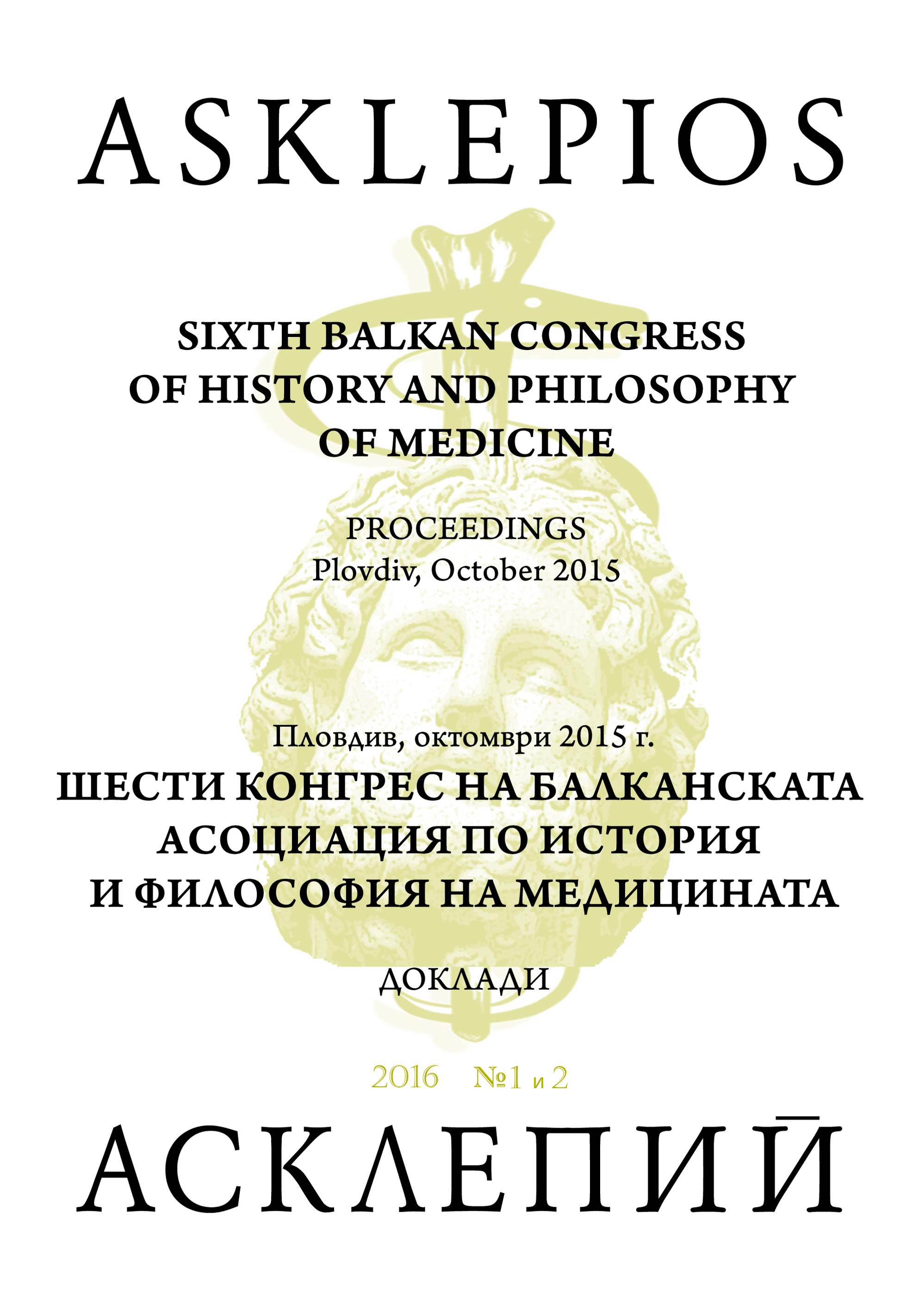Cerebrovascular disease – historical reference to the dominants of the present
Cerebrovascular disease – historical reference to the dominants of the present
Author(s): Kostadin Chompalov, Radka Massaldjieva, Penka Atanassova, Marieta PeitchevaSubject(s): History, Social Sciences, Recent History (1900 till today), Health and medicine and law
Published by: Балканска асоциация по история и философия на медицината (БАИФМ)
Summary/Abstract: Cerebrovascular diseases have accompanied man’s development and have left a trace in the history of medicine throughout the centuries. They include a wide range of disturbances of cerebral circulation of blood, the ischaemic ones being the most frequent. They may manifest themselves subclinically and clinically (transitory ischaemic attacks and brain infarcts). The stroke takes a central place in the history of cerebrovascular disease and at present remains one of the main reasons for morbidity and mortality in the world. References to this condition can be found even in “Hippocratic Corpus”, where it is known as apoplexy; the concept ” insult” appeared in the 19th century in France. Although from that moment onwards different strategies in the treatment of stroke have been used, therapeutic nihilism dominates till the middle of 20th century. It is only in the following decades that the successful therapeutic interventions begin to enhance as a result of the increased diagnostic possibilities and the new pathophysiological views. At present the scientific studies and the efforts of clinicians are directed to the research and implication of the basic cerebrovascular risk factors leading to stroke as well as to the earliest discreet symptoms of cerebrovascular disease - the cognitive impairments. Thus new dominants appear connected mainly with prevention. Ischaemic stroke remains one of the leading reasons of long-term disability in middle and advanced age in the world, which determines its serious social and medical importance. The high frequency of the subclinical cerebrovascular disease and the tendency for its “rejuvenation” clearly and unequivocally rank it among the diseases demanding prevention as a priority. Closely connected with this aspect is the retrospective research of young patients with stroke (45–55 years old) conducted at the Clinic of vascular diseases in Medical University of Plovdiv.
Journal: Асклепий. Международно списание по история и философия на медицината
- Issue Year: XI/2016
- Issue No: 01+02
- Page Range: 388-393
- Page Count: 6
- Language: English
- Content File-PDF

